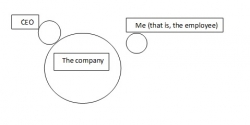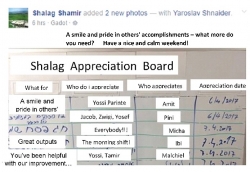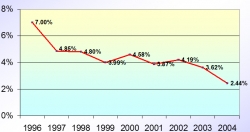More than ten years ago, the factory that I managed suffered from frequent employee absenteeism for a number of reasons, with the result being that we never knew who would show up for work at the beginning of a shift and who would not.
As I was about to visit a very prestigious company in Switzerland at that time, I told myself I would wait to hear how they coped with this.
I asked the Swiss manager how he addressed the situation. He shrugged and said "There's nothing you can do. An employee who gets up in the morning and doesn't feel like going to work just goes to his doctor and says he has stomach or back pains. What can the doctor say?"
We understood that we could only rely upon ourselves.
First, we began to appraise things and then we determined a plan of action. The improvement was relatively swift, and in a few years, we moved from one extreme end of the scale to the other, positive, end. As with every issue, here too, as soon as we implement indexes and seek out the root cause for the undesirable phenomena, we succeed in finding solutions.
Of course, the change in frequency of employee absenteeism was a direct outcome of the considerable improvement in work atmosphere, employee motivation and providing employees with the feeling that they are significant.
In an article I published here a few weeks ago, I stated that many companies do not see great importance in human resources and don't even have an HR manager.
But even at companies that do have HR managers, sometimes there is no evaluation, or they look only for soft indexes. (eg, gauging feelings, and in this case, I don't have any idea how they gauge). I am in support of clear, quantitative indexes..
Identifying the main issues for improvement
First of all, it is important to identify the principal challenges in the field of HR at any company. Then we determine the appropriate measure, evaluate the current situation, plan an improvement program and continue to evaluate to ensure that we see progress.
Indexes.
The indexes. listed below have served a very large multinational company, and I highly recommend them.
1. Employee turnover. One of the most painful issues at many companies is employee turnover.
A high turnover points to a lack of employee loyalty to the workplace.
As a result, knowledge is not accumulated, the employees (particularly on the production floor) don't have an opportunity to gain expertise and just move on. The situation worsened over recent years when the minimum wage rose, closing gaps between positions and companies, and minimum wage earners were able to attain the same wage at other work locations.
Therefore, employees would stay only if there was something other than salary that interested them.
At more than a few companies, I have found turnover rates of even 40% or 50% per year. Meaning that almost half of the employees had left and been replaced. And as the spread isn't uniform, we will discover more than once that most of the production employees have left and been replaced.
They did not have a chance to learn or operate the machines before they moved on. And to close the circle, if high job abandonment points to a lack of employee loyalty, one should analyze the reasons and strengthen their loyalty. Employees that are loyal to an organization are a priceless asset.
2. Absenteeism. This refers to unplanned absences (not including reserve military duty, planned vacations and maternity leave). Absenteeism is a type of job abandonment by more veteran employees who fear leaving but are also not loyal to the company. One should address this matter as in the previous matter.
Today, an employee at a particular company told me: "Listen, I'm here to make a living – simple wages I can get anywhere. But I'm also here to work and not just to make a living. I come here with motivation and the question is whether my boss will stamp out my motivation or not. Encourage and praise me or not. In my last conversation with him, I told him that if he had any remarks, he should say them immediately, not keep them inside and then explode at me later…"
It is important to remember that the most loyal of employees may also fall ill sometimes, so we can never expect to reach zero absenteeism.
3. Overtime. Overtime hours are the best way to attain local reinforcement at specific times without hanging on to surplus staff. Except that here, we have an opening for unplanned, unnecessary hours the employees may have put in at their own initiative, without management planning. So it is very important to allow overtime hours but to manage them. And if you want to manage, you have to measure…
4. Work according to Hours of Work and Rest Law. Perhaps it may seem strange to write this, particularly today when the Ministry of Commerce has significantly increased supervision. But yes, there is a problem and it is even quite prevalent.
5. Wage budget. As with other budget issues, I recommend that this issue be measured.
6. But don't forget, you need a budget…
Not every company works according to annual work plans and checks every month to see if there are any deviations and if so, how to improve them.
Recommendation
I highly recommend that your HR manager define the central issues at your company (from an HR aspect), construct an annual plan and determine indexes. (quantitative and quantifiable…) and follow up on progress.












 My First Book: Manage! Best Value Practices for Effective Management
My First Book: Manage! Best Value Practices for Effective Management